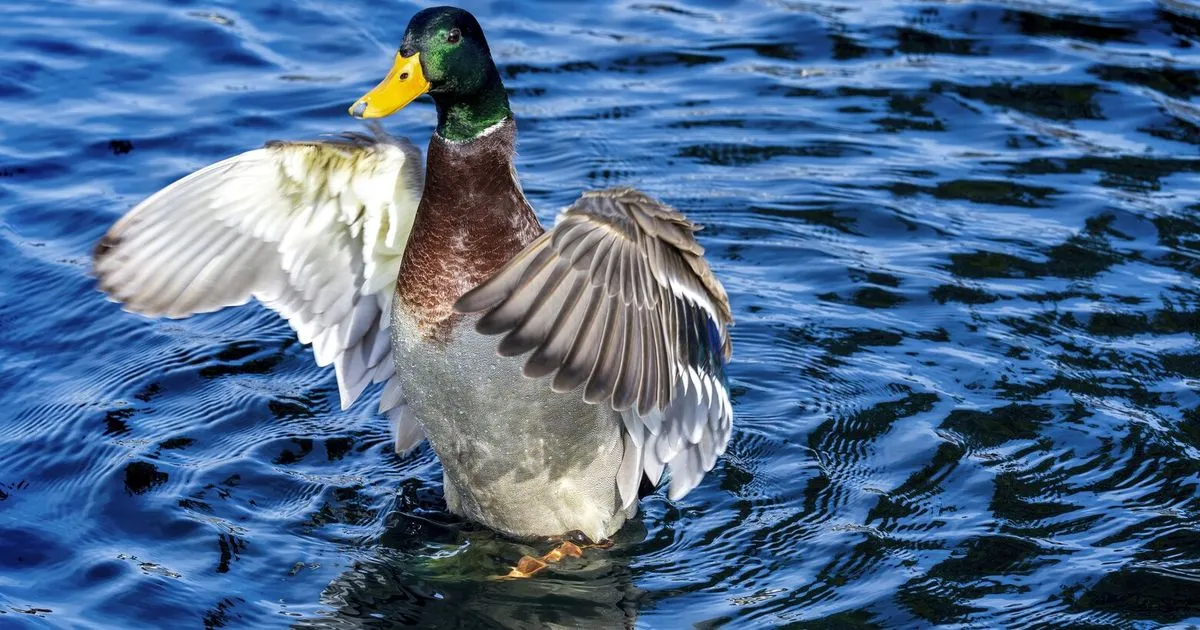
The emergence of bird flu has wreaked havoc on poultry and dairy farms across the United States, significantly driving up egg prices since its identification in North America in late 2021. However, the repercussions extend beyond farm animals, affecting a wide range of wild bird species. Over 170 different species of North American wild birds—including ducks, geese, gulls, owls, and eagles—have been reported to carry the virus, prompting wildlife experts to recommend caution around sick or deceased birds. Nevertheless, you can safely maintain your bird feeders as the overall threat to the general population remains low, according to scientists.
Since the onset of the bird flu outbreak, more than 12,000 individual birds have tested positive for the virus, as reported by the U.S. Agriculture Department. However, this figure is likely a “gross underestimate,” as most deceased birds are not sent for laboratory testing, according to Bryan Richards from the U.S. Geological Survey’s National Wildlife Health Center. Dabbling ducks, such as mallards and blue-winged teal, can carry the virus with minimal symptoms due to their co-evolution with these viruses. Despite this, they can still shed the virus through feces or saliva, potentially infecting other birds or mammals like foxes.
Birds that lack natural immunity, particularly those that migrate or congregate in large flocks—like geese—are at a higher risk of mass mortality. A recent outbreak among migratory eared grebes in Utah resulted in the deaths of between 15,000 and 25,000 birds near the Great Salt Lake, as reported by state wildlife officials. Additionally, seabirds, which often roost in large numbers, are also severely affected. In contrast, songbirds such as Northern cardinals, blue jays, and chickadees, which frequent bird feeders, seem to be less impacted since they do not gather in large flocks, as noted by Michael J. Parr, president of the American Bird Conservancy.
The symptoms of bird flu in wild birds can vary but may include lack of coordination, an inability to fly, and respiratory distress. Dr. Dana Franzen-Klein, a veterinarian and medical director at the University of Minnesota’s Raptor Center, advises that if individuals notice a wild bird behaving unusually, they should contact their local wildlife rehabilitator and avoid direct handling. If handling an infected bird becomes necessary, wearing gloves and a mask is highly recommended for safety.
Experts generally agree that bird feeders are safe and do not significantly contribute to the spread of bird flu. However, for those who also keep backyard chickens, Parr suggests removing the bird feeder to minimize any potential transmission risks to poultry. It is also advisable to clean bird feeders and nesting boxes regularly. The risk of spreading bird flu from bird feeders to humans is considered to be “very, very low,” according to experts.
The impact of bird flu on endangered species has prompted significant concern. For instance, in response to infections among the critically endangered California condors, scientists implemented a vaccination program. However, such measures are not feasible for most wild bird species. Instead, experts suggest that conserving wild bird habitats and reducing exposure to threats like pesticides and lead ammunition are more practical strategies for safeguarding these birds.
Bald eagles, which are federally protected but no longer classified as endangered, also face risks as scavengers. Richards noted that the first year after the virus's arrival saw substantial mortality among eagles, likely due to their consumption of infected ducks. An unusually high number of eagle chicks did not survive to adulthood during the breeding season following the virus's emergence, possibly due to the virus affecting sick parents' ability to care for them. However, the number of confirmed eagle infections nationwide has decreased from 427 in 2022 to 48 in the following year, indicating that those eagles that survived may have developed some acquired immunity. This past migration season, researchers observed a record number of bald eagles migrating through northern Minnesota, suggesting positive signs for their recovery.
The information presented in this article comes from the Associated Press Health and Science Department, with support from the Howard Hughes Medical Institute’s Science and Educational Media Group and the Robert Wood Johnson Foundation. The AP is solely responsible for the content provided.